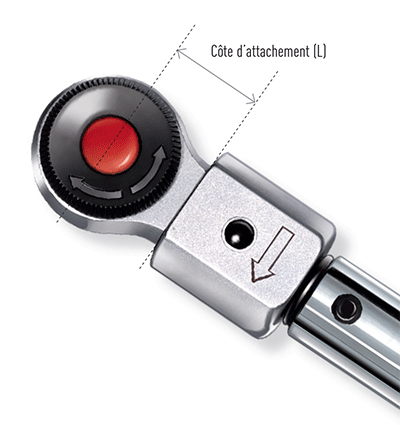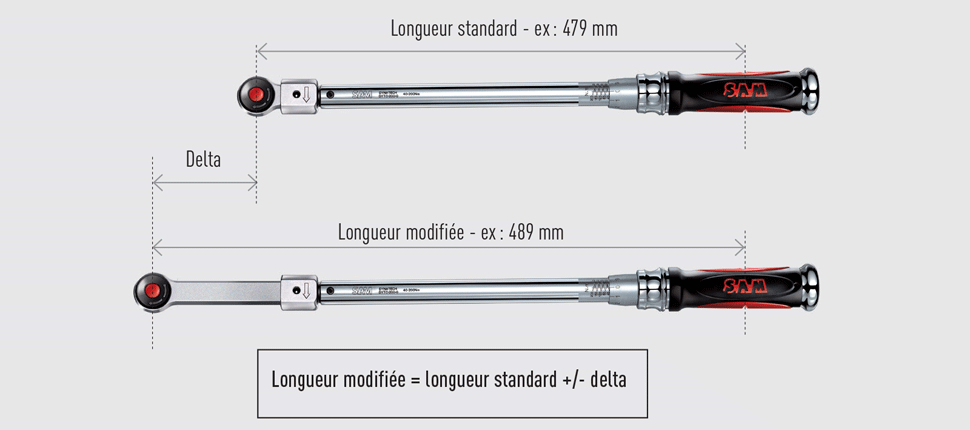How to calculate the correction coefficient for your torque wrench.
Bit with different attachment sizes
The fact of using an end fitting can modify your torque wrench's setting values.
Depending on your job or your needs you may have to use made-to-measure end fittings to help you do a specific tightening operation.
Using end fittings with non-standard attachment dimensions changes the torque wrench\’s characteristics.
You must therefore take into account a correction coefficient when setting the wrench in order to ensure tightening to the required torque value.

Calculation of the tightening torque with correction


A tip from a torque tightening specialist

Test performed with a DYNATECH DYTC-200-0 torque wrench and a DTC-S ratchet end fitting and a made-to-measure ratchet end fitting, extended by 10 mm with respect to a standard DTC-S.
Desired tightening torque value: 140 Nm
Standard length: 479 mm
Modified length: 489 mm
Torque value to be set: 140 x 479 / 489 = 137.1
You will therefore have to set the DYTC-200-0 wrench to 137 Nm so that the torque really applied to the subassembly is effectively 140 Nm.
Example of an application where you will have to use a correction coefficient to set the wrench correctly.

The standard attachment dimensions
17.5 mm with 9 x 12 mm rectangular end fittings25 mm with 14 x 18 mm rectangular end fittings
25 mm with 12 mm round end fittings
35 mm with 19 mm round end fittings
85 mm with 30 mm round end fittings
